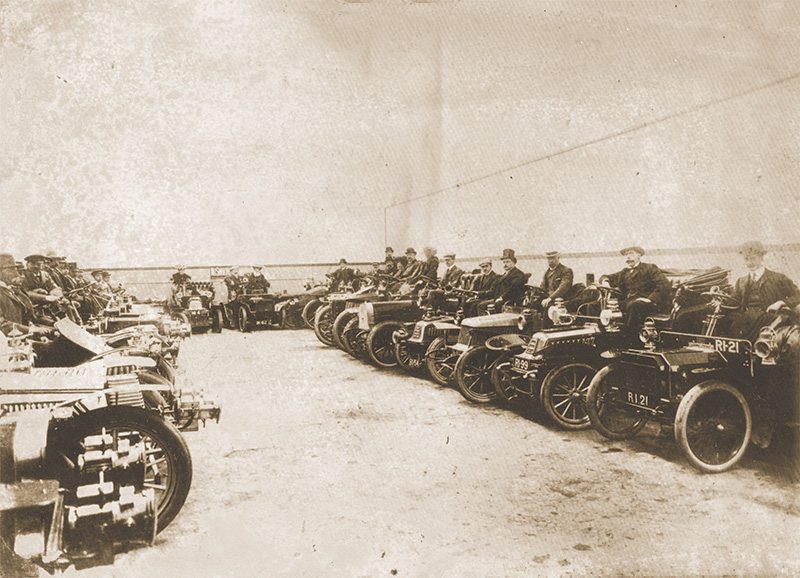
The scene is at the opening of the new members’ garaging facility in August 1904 at the Irish Automobile Club premises in Dawson Street, Dublin. The IAC, which had been founded in January 1901, acquired its more familiar initials RIAC in August 1918 when King George V granted it a royal charter, in recognition of the services of club members by adapting their cars as ambulances to ferry wounded soldiers from ships to Dublin hospitals and convalescent homes, or back to their families. Up to twenty cars were in full-time service as ambulances when the First World War ended and a further three ambulances were bought for use at the front in France.
By the time of this picture, it was estimated that there were over 200 cars on Irish roads. At the end of 1903, motor registration numbers were introduced for all mechanically propelled road vehicles, so the figure estimated may have been gleaned from adding up the totals of registration numbers issued thus far by the county councils and borough corporations (city councils). These local authorities were given the task of administering the registration system, with a two-letter (usually) index mark unique to that authority. Until 1920, the registration number was linked to the owner, not the vehicle, but if the owner operated more than one vehicle at the same time, a second number was required. The only exception was in some counties where a number could be used in duplicate if the second vehicle was a motorcycle.
Viewing the cars on the right, the first one, registered RI 21, is probably a Humber Humberette judging by the scuttle and bonnet design. Next is RI 99 which is possibly an Ariel, although many cars of that era used a “coal scuttle” bonnet, most notably Renault. The car beyond may be a Wolseley given the bonnet design. The next in line showing the number RI 54 could be an early chain drive Daimler. The height and proportions of the radiator of the next car suggests an Argyle 10hp.
As the last cars in the row are difficult to make out, if we move to the line facing the camera, then first is IK 62, possibly a Siddeley 18 hp and next to it is NI 4, which looks like a Clement Talbot. There is too little visible of the cars on the left to attempt identification. The owners’ addresses determined which licensing authority issued their numbers; cars registered in the RI series indicate the Dublin City area, IK was for County Dublin and NI was the County Wicklow index mark.
My thanks to Alec Sinclair and Bob Montgomery of the RIAC for their assistance and for allowing me to reproduce this picture.
By COLM O’NEILL
CLICK BELOW TO VIEW OR PRINT ARTICLE WITH PHOTO
MEMORY LANE_1904